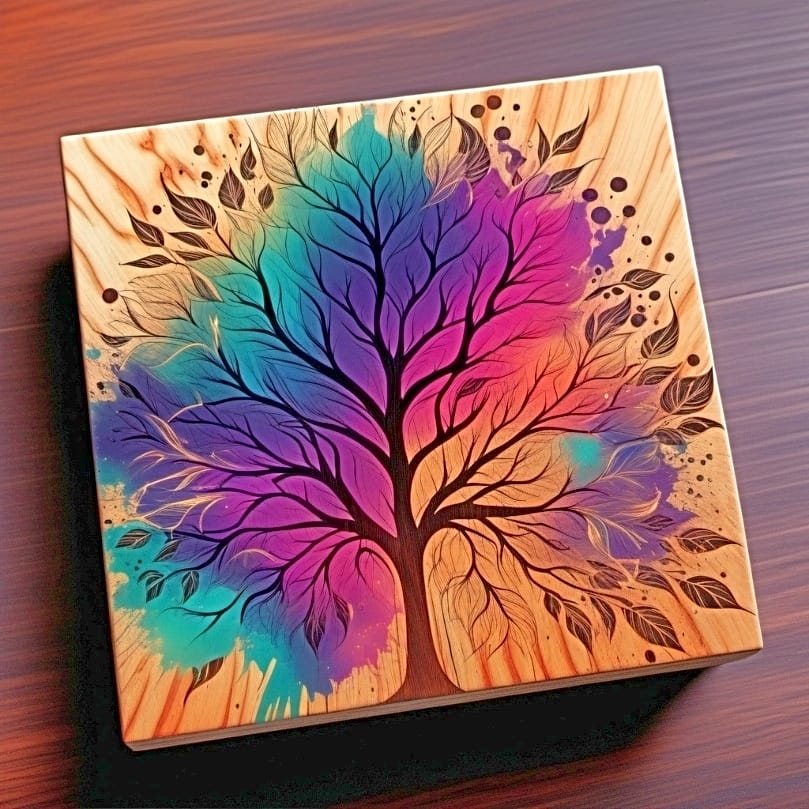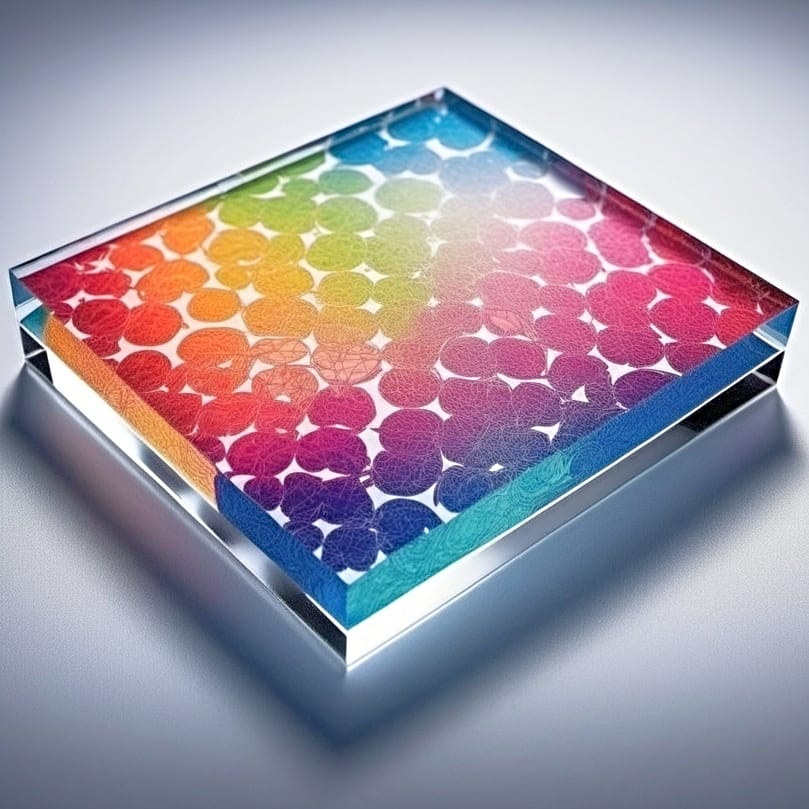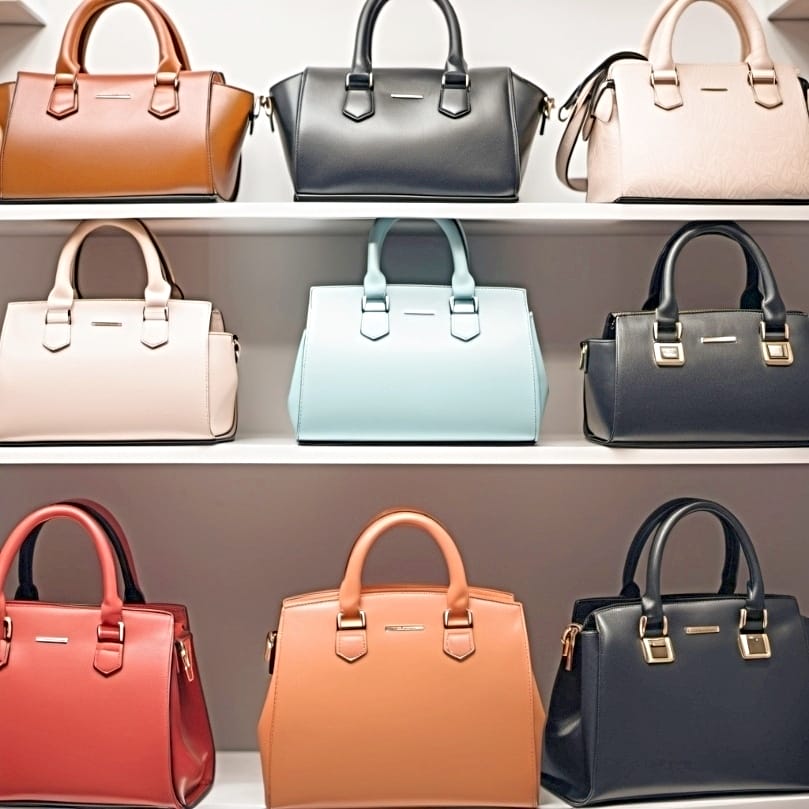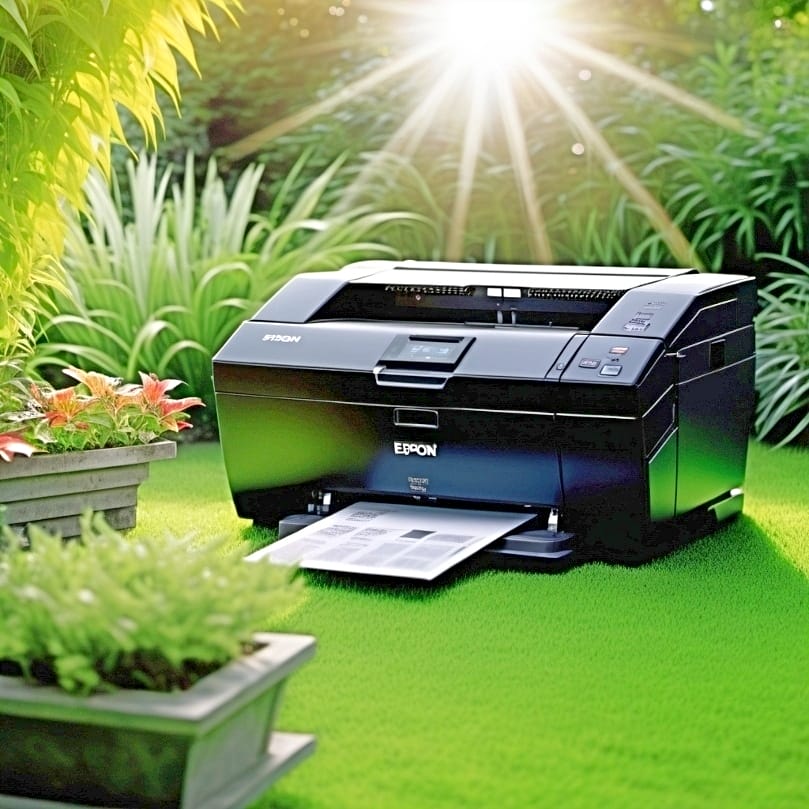Table of Contents
ToggleDo you dream of creating vibrant and lasting designs on glass objects? ‘Sublimation on glass’ is a detailed process that embeds your design into the glass itself, rather than merely laying on top. In this article, we’ll share insights into choosing the right materials, perfecting your technique, and troubleshooting common pitfalls. Get ready to transform everyday glass items into personalized pieces of art with sublimation, whether for personal enjoyment or commercial production.
Key Takeaways
- Glass sublimation lets you infuse designs into glass items using a special heat-resistant, polymeric coating for vibrant, long-lasting results. Popular items for sublimation include tumblers, cutting boards, and panels.
- Essential tools for sublimating on glass include a reliable sublimation printer, high-quality sublimation ink and paper, and a heat press machine configured with the correct settings for the glass item.
- To avoid common issues in glass sublimation, ensure glass surfaces are clean, apply the design accurately, use correct temperature and pressure settings, and let items cool before handling.
Exploring the Basics of Glass Sublimation

Imagine having your favorite photo, logo, or design permanently imprinted on a glass tumbler, cutting board, or mug. This is the beauty of glass sublimation. Unlike traditional printing methods, sublimation infuses the design into the glass surface, resulting in vibrant, long-lasting prints. But successful glass sublimation hinges on a crucial component: heat-resistant glass with a polymeric coating. This special coating allows the sublimation ink to adhere to the glass, ensuring that your designs don’t peel or fade over time.[1]
And the best part? You’re not limited to just cups or tumblers. With glass sublimation, you can personalize a range of items, including:
- Cups
- Tumblers
- Cutting boards
- Panels
This makes it a versatile technique for both personal and commercial use.
The Science Behind Sublimation
You might wonder, what is the mechanism behind sublimation? It’s a fascinating process where solid particles, such as sublimation ink, directly convert into a gaseous state, bypassing the liquid phase. Under the influence of heat, these gaseous ink particles permeate the polymer coating on the glass substrate, creating a vibrant, permanent image.
⫸ Click Here For Best Selling Sublimation Printers And Products ⫷The result? High-definition prints that won’t fade, peel, or scratch off, making sublimated glass items ideal for both everyday use and special occasions.[2]
Why Choose Glass for Sublimation?
What makes glass an excellent choice for sublimation? Foremost, the unique properties of glass, including its transparency and interaction with light, significantly enhance the vibrancy and depth of sublimated images, lending them an extraordinary appeal. But it’s not just about aesthetics. Glass is a highly versatile material that can be sublimated in a variety of ways.
For example, frosted glass offers a unique textured appearance while maintaining color vibrancy. And thanks to the strong bond between the polymer-coated glass substrates and the ink, your designs are not only beautiful but also durable and resistant to fading or peeling.
Companies like Subli Glaze offer do-it-yourself sublimation coatings designed for various surfaces, including glass. Their products enable sublimation decoration on items such as ceramics, wood, and slate,
Essential Tools and Materials for Sublimating on Glass
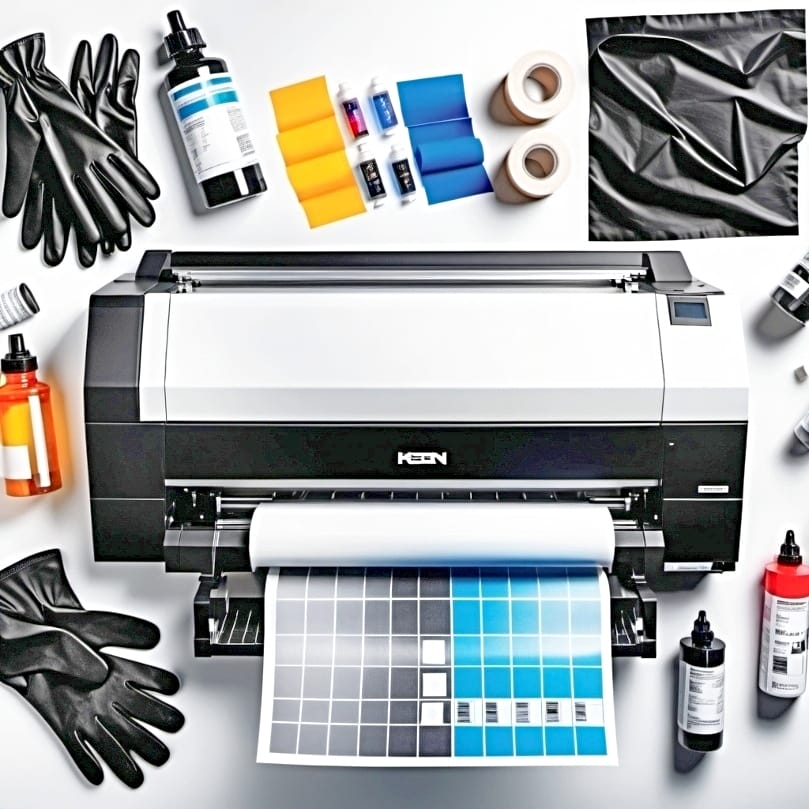
Having understood the basics of glass sublimation, it’s time to discuss the necessary tools and materials required for this process. Just like any art or craft project, having the right tools can make a world of difference in your results. At the top of the list is:
- A sublimation printer like a converted Epson EcoTank inkjet printer, which lets you print your designs
- Specialty sublimation paper designed to hold and release sublimation ink
- High-quality sublimation ink for vibrant, lasting prints
- Laptop for your sublimation designs – you can read our reviews on laptops for sublimation here
And, of course, you can’t sublimate without heat – that’s where a heat press machine like the Cricut EasyPress 2 comes in, applying the necessary heat to transfer the design onto the glass surface.
Choosing the Right Sublimation Printer
As you select a sublimation printer, consider the following options. Moving into 2025, I recommend you consider either a dedicated sublimation printer such as the Brother SP-1 or consider converting an Epson EcoTank such as the ET 2800 or ET 15000 model. While you can convert an Epson EcoTank printer for sublimation by replacing the standard ink with sublimation ink, keep in mind that this process voids the printer’s warranty.
Meanwhile, Brother SP-1 printers offer potential higher print quality and experience making them a worthwhile investment for serious sublimation enthusiasts. I recommend examining my in-depth guide on sublimation printer reviews before making a decision. But no matter which printer you choose, make sure to use the right sublimation paper. Since this is a detailed discussion, please read my in-depth guide on selecting a sublimation paper brand.
Selecting Premium Sublimation Ink and Paper

The final outcome of your glass sublimation projects heavily depends on the quality of your sublimation ink and paper. Here are some recommendations:
- Use high-quality sublimation ink like Hiipoo for fine prints and vivid, long-lasting colors on glass.
- For sublimation paper, heavier options like 125g or 120g offer better saturation and ink transfer for vibrant designs.
- Lighter papers like 105g can accommodate seamless designs and printers with wheel marks or ink pickup issues.
A-SUB 125g, for instance, is a premium sublimation paper designed to hold ink without blurring, withstand heat press temperatures, and efficiently release dyes. And remember, compatibility between your sublimation ink and paper can contribute to the quality and reliability of your design transfer, so consider using the same brand for both sublimation blanks and other materials.
Heat Press Essentials
Transferring your design onto the glass surface requires a heat press machine. An example of a suitable heat press for this process is the Cricut EasyPress 3. However, if you’re customizing glass mugs, you might want to opt for a mug press machine like the DSSTYLES Mug Press, which specializes in sublimating designs onto glass mugs. Heat presses can accommodate a range of mug sizes, highlighting their adaptability for different glass product dimensions.
For thicker glass items, swing-away heat presses are recommended to achieve even pressure and temperature distribution. Some mug press machines even offer convenient features like one-touch settings and automatic safety shutoffs for a safer and better user experience. And don’t forget, a heat press mat like the 12” x 12” EasyPress Mat is essential to create a stable and protective surface while sublimating on glass.
Preparing Your Glass Item for Sublimation
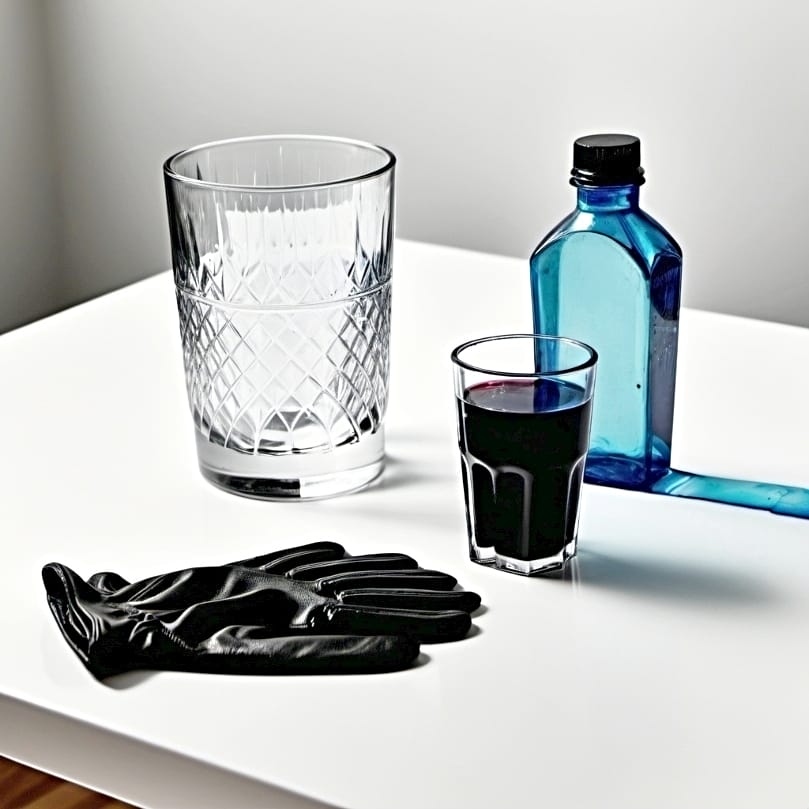
Prior to initiating the printing process, it’s necessary to get your glass item ready for sublimation. First, ensure you’re using heat-resistant glass, as it’s designed to withstand the high temperatures of the sublimation process. If your glass item has any rubber feet or attachments, remove them to maintain a flat surface for the design transfer.
Next, clean the glass surface with isopropyl alcohol and a cotton swab to remove any dirt, oils, or fingerprints. It’s also a good idea to wear gloves during handling to prevent transferring oils from your fingers onto the glass, which can inhibit the sublimation process. And finally, use tools like:
- a Cricut spatula
- scissors
- pen or pencil
- ruler
to precisely prepare and align the design on the glass.
Cleaning the Glass Surface
A clean glass surface is crucial for a flawless sublimation print. Any dust, lint, hair, fingerprints, or oils on the glass can lead to printing flaws like the ‘orange peel’ effect or other imperfections.
To clean your glass surface, follow these steps:
- Apply rubbing alcohol, preferably 91% isopropyl alcohol, to a lint-free cloth.[3]
- Gently wipe the cloth across the glass surface, removing any dirt or debris.
- Allow the alcohol to dry completely before proceeding with applying the sublimation print.
By following these steps, you can ensure that your glass surface is clean and ready for a perfect sublimation print.
You can also use a lint roller or a tape roller over the glass surface multiple times to ensure any remaining dust or fibers are picked up and removed. For glass tumblers, it’s beneficial to clean them with isopropyl alcohol and a cotton swab to remove any remaining contaminants that could affect the dye transfer.
Applying a White Sublimation Coating

Once your glass surface is clean, it’s time to apply a white sublimation coating. This coating allows the sublimation process to take place on regular glass items.
To apply the coating, follow these steps:
- Use White Oracal 651 Vinyl as the sublimation coating on glass.
- Apply the vinyl to the back side of the glass.
- Use transfer tape and a scraper to remove any air bubbles.
By following these steps, you can ensure a smooth and successful sublimate on glass process.
Alternatively, a clear laminating pouch can provide a sublimatable surface when adhered to the smooth side of the glass using a heat press. Applying a layer of White Oracal 651 Vinyl or similar vinyl aids the sublimation print’s adhesion during the heat press process.
The Sublimation Printing Process on Glass
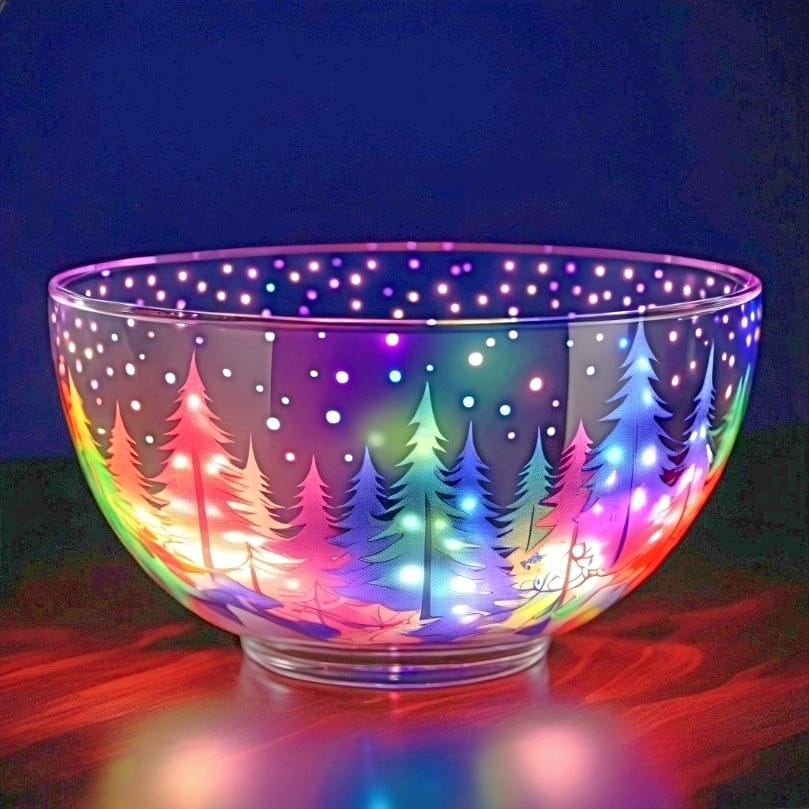
Now that your glass item is prepped and ready, it’s time to get into the heart of the sublimation process: printing and transferring your design. The first step is to print your design on sublimation paper. Unlike printing for other surfaces, the image isn’t reversed when printing for sublimation on glass.
Once you have finished printing, you can use heat-resistant tape to adhere the printed paper to the glass blank. This will help secure the paper in place. This prevents the design from shifting during sublimation, ensuring a crisp transfer. It’s advisable to use a guillotine cutter to trim the sublimation design to size, making sure it fits perfectly on the glass surface.
And finally, use a heat press to apply the printed image onto the material, completing the transfer onto the glass.
Printing Your Sublimation Design
One key point to recall while printing your design for glass sublimation is that there’s no need to mirror the image if the poly coating is applied on the reverse side of the sublimation blank. This means that the image will be transferred and viewed correctly from the front without the need for image mirroring. For software, Google Docs is recommended for printing sublimation designs for glass items. Just make sure your design is in the actual picture configuration and not in reverse.
Once your design is printed on your sublimation paper, you’re ready to move on to the next step: transferring the design onto the glass.
Transferring the Design onto Glass
Transferring your design onto the glass surface is a crucial step in the sublimation process. Start by applying heat-resistant tape to the edges of the sublimation paper, avoiding the image area to prevent marks or discoloration on the final print. Tape the sublimation design across the shortest distance to minimize the tape’s contact with the heat press, which could affect transfer quality.
For items like tumblers, position the design face down on the glass with the sublimation ink pressed against the surface and tape it down to prevent shifting during the heat press. For items like coasters or cutting boards, secure the sublimation paper with heat-resistant tape for optimal heat transfer.
And don’t forget to protect your heat press from the ink gases released during sublimation by using protective paper such as Artesprix Protective Paper or butcher paper both above and below the glass blank during the press. And remember, the print side should be up when pressing the glass item with the sublimation print.
Achieving the Perfect Press
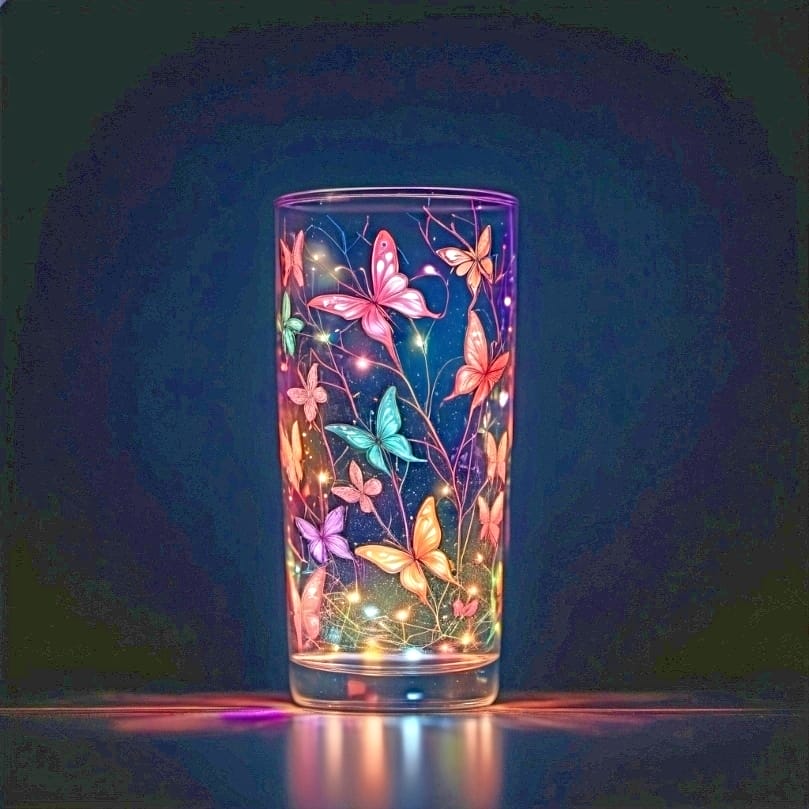
After successfully transferring your design onto the glass, the next step is to attain an ideal press. The key to successful sublimation on glass involves reaching the optimal interplay of temperature and pressure, catering to the transparency and light interaction properties of the material. Depending on the size and thickness of your glass item, you’ll need to adjust your heat press’s temperature and pressure settings accordingly.
For instance, glass frames may require a temperature of 383 degrees Fahrenheit for 180 seconds. To avoid damage to both the design and the heat press, consider using white cardstock or butcher paper around the glass item during pressing. And don’t forget to use Teflon sheets to prevent dye seepage and protect the glass during the heat press process.
For glass tumblers with full wrap designs, pressing them once, rotating, and then pressing a second time prevents fading areas and ensures a uniform appearance.
Temperature and Time Settings

The temperature and time settings for your heat press will depend on the specific glass item you’re sublimating. For instance, glass photo panels are sublimated at around 400°F for 180-240 seconds, depending on their thickness and size. Glass coasters, on the other hand, require a pressing temperature of 400°F for 60 seconds.
Glass cutting boards need a bit more time, with the heat press set to 400°F for 60 seconds, rotate 45 degrees, and repeat until reaching a total of 4 minutes. For glass tumblers, a sublimation temperature of 360°F should be applied for 50 seconds in a tumbler press. And sublimation glass magnets should undergo heating at 380°F for a duration of 90 seconds.
Remember, achieving even pressure and heat may require a series of trial and error to find the right settings for successful glass sublimation.
Using Teflon Sheets and Heat-Resistant Gloves
Safety is key when working with high temperatures, so always use heat-resistant gloves when handling glass items during and after pressing. These gloves are crucial when removing sublimated glass items from the heat press to prevent burn injuries. Similarly, using unwaxed butcher paper or release paper during the pressing process helps guard the heaters against ink transfer and contamination.
All these protective measures ensure not only a successful sublimation process but also a safe one.
Aftercare and Maintenance
Taking care of sublimated glass items is just as important as creating them. After the sublimation process, allow your glass items to cool down naturally at room temperature. This prevents thermal shock, which could lead to cracks or breakage of the glass item.
When it comes to cleaning, hand washing is recommended to maintain the integrity of the design and avoid scratches, especially on surfaces like frosted glass. By properly caring for your sublimated glass items, you can ensure the longevity and vibrancy of your designs, making them cherished items for years to come.
Cooling Down and Handling
Following the heat press process, it’s important to allow your glass items to naturally cool down at room temperature. This helps prevent thermal shock, which could lead to cracks or breakage.[4]
You might be tempted to speed up the cooling process, but remember, patience is key here. Use heat-resistant gloves to remove the glass blank from the heat press and place it onto a heat-safe surface to begin the cooling process.
Once the item has sufficiently cooled and can be handled safely, carefully peel off the transfer paper to reveal the design.
Cleaning and Usage Tips
Maintaining the integrity of your sublimated design is crucial for its longevity. When it comes to cleaning, it’s best to hand wash your sublimated glass items. This prevents scratches, especially on frosted glass surfaces.
For glass cutting boards with sublimation prints, avoid contact with water on the design’s side and always hand wash to preserve the design. With proper care, your sublimated glass items will not only look stunning but also last for years to come.
Creative Project Ideas with Glass Sublimation
Armed with the fundamentals of glass sublimation, it’s time to unleash your creativity. Glass sublimation is not just about transferring images onto glass; it’s about transforming ordinary glass items into personalized masterpieces through the sublimate glass process. From personalizing gifts to creating promotional items or branded merchandise, the possibilities are endless.
The superior precision and clarity of sublimation on glass enable you to create highly detailed images that surpass those achievable with traditional glass art methods. For instance, a glass cutting board with a printed conversion chart or measuring guide can be an excellent blend of aesthetic value and functionality. For example, you can learn to sublimate on wine glasses with stem in our separate guide.
Personalizing Glass Cutting Boards
Glass cutting boards are not only functional kitchen tools but also great canvases for your sublimation designs. When personalizing glass cutting boards, apply the design on the backside to preserve the food safety of the cutting surface. You can customize them with unique embellishments such as custom recipes or family names, perfect for personalized kitchen decor or gifts.
Or create commemorative glass cutting boards with special dates or images for memorable events. They also serve as excellent trivets for hot dishes or decorative home accents, adding versatility to the gift. Consider incorporating glass tiles for an added touch of elegance and style.
Customizing Glass Mugs and Tumblers

Your morning coffee or tea can become even more enjoyable with a customized glass mug or tumbler. With sublimation, you can create personalized designs that reflect your style or mood, making each sip a unique experience. Some design ideas for your customized glass mug or tumbler include:
- Monograms
- Intricate patterns
- Inspirational quotes
- Photos of loved ones
- Favorite sports teams or hobbies
The possibilities are endless! Let your creativity shine and start enjoying your morning beverage in a personalized way.
For businesses, sublimating logos or promotional artwork onto glass tumblers offers a unique branding opportunity that customers will appreciate and use daily.
Troubleshooting Common Issues
Despite being an enjoyable and rewarding process, glass sublimation might present certain challenges. Variables that affect successful sublimation on glass include:
- Ink quality
- Print clarity
- Pressure
- Time
- Consistent heat application
Ensuring the print is correctly sized before pressing is critical to avoid issues with image transfer during the sublimation process. Also, before removing the entire sublimation print, it’s advised to check the image since re-aligning a partially removed print can be challenging if an additional press is needed.
But don’t worry – with a little patience and practice, you’ll master the art of glass sublimation in no time!
Dealing with Sublimation Mistakes
Mistakes happen, but they don’t have to ruin your sublimation project. If sublimation ink has transferred to unwanted areas of the glass, it can be gently scraped away with a razor blade without damaging the glass surface. For persistent sublimation ink stains that are not removable with simple scraping, glass etching cream may be used as a last resort.
However, be aware that while using glass etching cream can remove stubborn ink stains, it also carries the risk of etching the glass surface itself, potentially altering its appearance.
Adjusting for Uneven Pressure or Heat
Uneven pressure or heat during the sublimation process can lead to less than perfect results. If you encounter issues with a press closing around a glass tumbler, it’s better to adjust the pressure rather than forcing the machine. Most tumbler presses allow you to adjust the pressure using two knobs to either tighten or release, ensuring an even distribution around the glass item.
Achieving even pressure and heat may require a series of trial and error to find the right settings for successful glass sublimation. Remember, each project is unique, so don’t be afraid to experiment with different settings until you achieve the perfect press.
Summary
From understanding the science behind sublimation to mastering the art of glass sublimation, we’ve covered a lot of ground. We’ve delved into the essentials of glass sublimation, discussed the importance of choosing the right tools and materials, and highlighted some creative project ideas. We’ve also addressed common issues and provided solutions to help you navigate any challenges you might encounter. Whether you’re a hobbyist looking to personalize your glass items or a business exploring a unique branding opportunity, glass sublimation offers endless possibilities. So why not start your glass sublimation journey today and unlock a world of creativity?
Frequently Asked Questions
Can you sublimate on any glass?
No, you cannot sublimate on any glass. It requires a polyester or vinyl sublimation coating and heat-resistant glass to accomplish sublimation on glass surfaces.
Can you sublimate on glass mason jars?
Yes, you can sublimate on glass mason jars using a sublimation printer or heat press, and it only takes a short amount of time, such as 90 seconds in some cases.Mar 22, 2023.
How long do you heat press sublimation on glass?
You should heat press sublimation on glass for about 3-5 minutes at 400°F. This creates a vibrant, lasting image on the glass.
What is glass sublimation and why is it different from other printing methods?
Glass sublimation is different from other printing methods because it infuses the design into the glass surface, creating vibrant and long-lasting prints without peeling or fading. It’s a type of sublimation printing specifically for glass substrates.
What tools and materials do I need for glass sublimation?
You’ll need a sublimation printer, specialty sublimation paper, high-quality sublimation ink, a heat press machine, and heat-resistant glass items with a polymeric coating for glass sublimation. Happy crafting!
References
- Al-Azzawi, S., & Yasin, F. (1985). Optical and chemical properties of glass with special reference to building. Solar & Wind Technology, 2(1), 41–51. https://doi.org/10.1016/0741-983x(85)90025-6
- Chemistry online @ UTSC. (n.d.-b). https://www.utsc.utoronto.ca/webapps/chemistryonline/production/sublimation.php#:~:text=Sublimation%20is%20a%20phase%20transition,the%20lower%20the%20sublimation%20temperature.
- PubChem. (n.d.-d). Isopropyl alcohol. PubChem. https://pubchem.ncbi.nlm.nih.gov/compound/Isopropyl-Alcohol
- Thermal Shock | Center for Advanced Life Cycle Engineering. (n.d.). https://calce.umd.edu/thermal-shock








